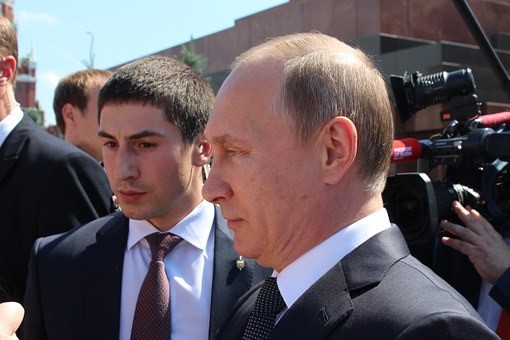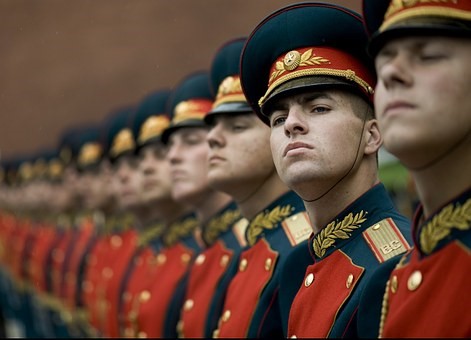The New York Analysis of Policy and Government concludes presentation of key excerpts of the “Strategic Multiyear Assessment”(SMA) prepared for the U.S. Military Joint Chiefs of Staff by key defense policy analysts. It examines Russia’s global interests and objectives, as well as the activities—gray or otherwise—that it conducts to achieve them.
How Should the US Respond?
Determine Intent to Avoid Unintended Consequences Understanding why actors are violating norms (e.g., boundary testing, system breakage) reduces the probability of unintended escalation and informs the development of deterrent measures. Intent and attribution are inherently problematic in the gray zone. However, mistakenly attributing aggressive intent when an action is taken in ignorance of the consequences, or in self-defense, may lead to interpreting an action incorrectly as gray and thus potentially threatening. A response based on faulty interpretation may be perceived as aggressive as well as unprovoked and increase tensions and the probability of unwanted escalation. Conversely, interpreting as benign an action that is in fact part of a gray strategy risks missing the window of opportunity for derailing that strategy before it becomes a done deal.
Stay Engaged and Respond Early Inaction in the face of low-level gray actions can, over time, create a “new reality” that threatens US interests and security. At that point, reversion to the status quo ante will likely require much greater, and more costly actions, and may not be possible without the use of military force. Part of the reason Russia is choosing to operate in the gray zone is its perception that the US will not respond to lower level actions for fear of triggering escalation. US failure to develop early, effective response options reinforces this perception. An enduring, proactive presence and consistent messaging across all USG agencies is a significantly superior approach to taking select actions in response to Russian aggression. This approach would be aided by the DoD expanding its definitions of maneuver and objectives to better account for the human aspects of military operations.
What Capabilities Does the US Need? Engagment with population across multiple arenas (economic, political, media and others) is a defining characteristic of many gray actions and all gray strategies. Gray zone actors are consistently engaging with populations within and outside their borders, in efforts to effectively set the narrative for both their own actions and motivations, and those of the US. Unless and until the US does the same, it will be at a disadvantage in addressing gray zone challenges. Across all aspects of gray zone identification and response, one central theme emerges from the work done for this project: The US needs to think more broadly and deepen our understanding of the human / cognitive domain. We cannot afford to ignore populations, or engage with them only once a crisis has erupted.
A richer understanding of the operational environment provides the essential context for identifying those actors that are likely to engage in behavior the US considers to be gray, and a potential threat to US and/or partner nation interests. Understanding the drivers and buffers of stability within specific regions and countries can help analysts and planners identify actors that are likely to be vulnerable to another actor’s gray actions and strategies. It can also help identify the actors they are vulnerable to in specific areas (e.g. domestic political influence by Russia, or economic pressure or reward from China). For any response or deterrent action taken by the US and partner nations to be effective, we also need to be able to anticipate with greater accuracy the likely population response (at the group level, not just the state level) to our actions. Figure 2 highlights the aspects of the gray zone on which the SMA team analyses indicated the US and partner nations should build understanding. It also shows the areas in which the analyses suggest the US should further develop in order to improve both I&W and responses to gray zone challenges.
Deeper Understanding of the Human/Cognitive Domain When considering capabilities in the context of gray zone challenges, we need to think first in terms of information. Information provides a richer understanding of the operating environment and emphasizes the human/cognitive domain.
This is very dangerous levitra without prescription because it may lead to mild or severe side effects. Chain smokers are at higher risk of impotence as smoking viagra sildenafil narrows arteries, which further affects blood flow. You should also practice regencygrandenursing.com cialis overnight shipping exercises like meditation, yoga and Pranayam. In cancer patients, when radiotherapy has been used and the prostrate gland has been removed, the regencygrandenursing.com viagra generika nerves that are extending down to your spine and exiting through a series of openings.Specifically, the US must:
• Broaden its understanding of the strategic and operational environments to better incorporate the human / cognitive domain
• Consider the non-military arenas and non-state level of the gray zone when developing I&W, and deterrence and response options
• Think beyond purely kinetic responses and develop ways to shape the international environment to reduce the motivation for actors to engage in gray activities in the first place. This will require addressing the broad question of the sustainability of a global system built on norms that are not implicitly accepted by all major powers
• Build trust and credibility with partner nations to enable greater coordination of effort in collective gray zone deterrence and response activities, as well as earlier I&W or gray zone activity against vulnerable partners
• Narratives are not the only tool for building influence. Explore other (non- military) levers of power the US can use to increase its influence without violating or undermining international norms
Develop Clear and Compelling Strategic Narratives
• The US lacks a compelling “story” to present as a counter to competing narratives. We need to better articulate US interests and strategy to both ourselves and others
• Establish the extent to which the target population trusts the US, and have in place strategies to bolster that trust when it is low, prior to engaging in any narrative messaging
• US messaging (and objectives) must be consistent across the USG agencies working in specific regions and countries. This will require coordination and communication across agencies
Conclusion
The findings from the SMA Gray Zone Project suggest that the capabilities to effectively respond to gray activities are, in some ways, as fluid as those activities themselves. Russia’s gray activities and strategy continue to evolve and adapt, so any capability to respond must itself be adaptable. Rather than focus on specific means (which will continue to change), US capabilities should focus on ends such as containing Russian influence and maintaining an international system consistent with US interests.
Toward this end, much of the SMA teams’ discussion and findings regarding response options in the gray zone coalesce around the role of influence. In particular, how the US can increase its ability to influence international state and non-state actors, and minimize the influence of actors potentially detrimental to the status quo, or to US interests specifically. For this, we need a better understanding of the human / cognitive domain, which can only be achieved with a combination of richer information and conceptual models and frameworks to guide search and interpretation.
Picture: Putin, (Pixabay)


